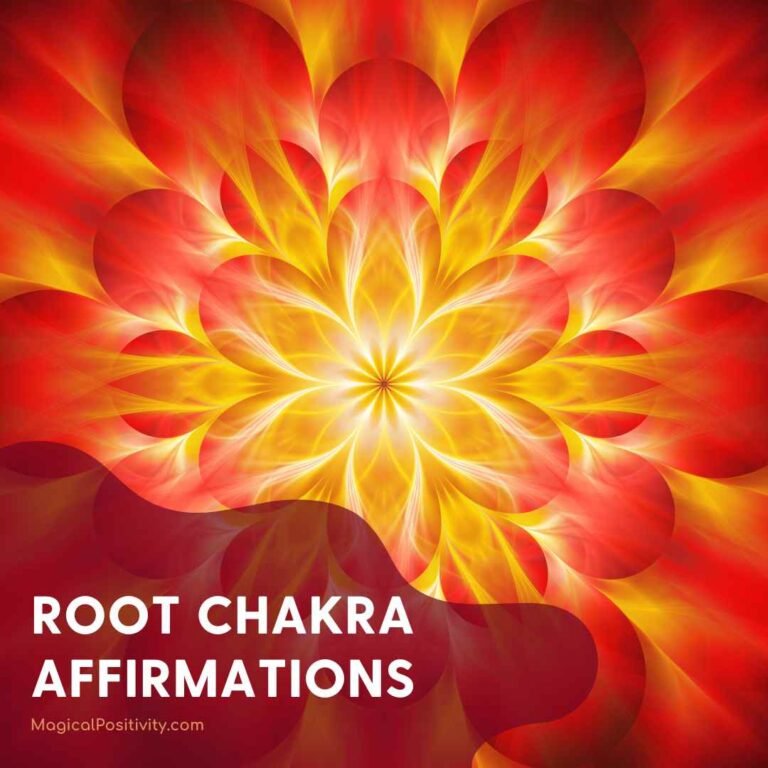The human body is not just a physical vessel – it is also a complex system of energy centers called chakras. Chakras are believed to be located along the spine, and each chakra is associated with different aspects of our physical, emotional, and spiritual wellbeing. In this article, we’ll explore the seven main chakras and their meanings.
- Root Chakra (Muladhara) The Root Chakra is located at the base of the spine and is associated with grounding and survival instincts. This chakra is represented by the color red, and when it is balanced, we feel secure, stable, and connected to the earth. When it is blocked or imbalanced, we may experience fear, anxiety, or a sense of disconnection.
- Sacral Chakra (Svadhisthana) The Sacral Chakra is located just below the navel and is associated with creativity, sexuality, and emotions. This chakra is represented by the color orange, and when it is balanced, we feel creative, passionate, and emotionally stable. When it is blocked or imbalanced, we may experience low libido, emotional numbness, or difficulty expressing ourselves.
- Solar Plexus Chakra (Manipura) The Solar Plexus Chakra is located in the upper abdomen and is associated with personal power, self-esteem, and confidence. This chakra is represented by the color yellow, and when it is balanced, we feel confident, assertive, and capable. When it is blocked or imbalanced, we may experience low self-esteem, feelings of powerlessness, or a lack of direction in life.
- Heart Chakra (Anahata) The Heart Chakra is located in the center of the chest and is associated with love, compassion, and forgiveness. This chakra is represented by the color green, and when it is balanced, we feel open-hearted, loving, and able to connect with others. When it is blocked or imbalanced, we may experience a sense of isolation, difficulty trusting others, or an inability to express our emotions.
- Throat Chakra (Vishuddha) The Throat Chakra is located at the base of the throat and is associated with communication, self-expression, and authenticity. This chakra is represented by the color blue, and when it is balanced, we feel confident in our ability to express ourselves and speak our truth. When it is blocked or imbalanced, we may experience difficulty speaking up, fear of judgement, or a sense of being misunderstood.
- Third Eye Chakra (Ajna) The Third Eye Chakra is located between the eyebrows and is associated with intuition, insight, and spiritual awareness. This chakra is represented by the color indigo, and when it is balanced, we feel connected to our intuition and able to see beyond the physical world. When it is blocked or imbalanced, we may experience a sense of disconnection from our intuition or difficulty accessing our spiritual awareness.
- Crown Chakra (Sahasrara) The Crown Chakra is located at the top of the head and is associated with enlightenment, connection to the divine, and higher consciousness. This chakra is represented by the color violet or white, and when it is balanced, we feel a sense of oneness with the universe and a deep spiritual connection. When it is blocked or imbalanced, we may experience a sense of disconnection from our spirituality or a lack of purpose in life.
In summary, each chakra plays a crucial role in our physical, emotional, and spiritual wellbeing. By understanding the functions of each chakra and working to balance and align them, we can experience a greater sense of wholeness and connection to ourselves and
the world around us. There are many ways to balance the chakras, including meditation, yoga, sound healing, and other energy healing practices. Here are a few simple techniques you can try to help balance your chakras:
- Grounding: Spend time in nature, walk barefoot on the earth, or visualize roots growing from your feet into the ground.
- Breathwork: Practice deep, conscious breathing to help release tension and activate the chakras.
- Yoga: Many yoga poses are designed to stimulate and balance the chakras, such as downward dog for the Root Chakra, warrior pose for the Solar Plexus Chakra, and cobra pose for the Heart Chakra.
- Sound Healing: Use sound healing tools like singing bowls, gongs, or chimes to stimulate the chakras and promote relaxation.
- Meditation: Visualize each chakra as a spinning wheel of energy, and imagine each one becoming brighter, clearer, and more balanced.
It’s important to note that chakra work is not a substitute for professional medical or mental health treatment. If you are experiencing physical or emotional symptoms, it’s important to seek medical or psychological support in addition to exploring energy healing practices.
In conclusion, the seven chakras are a fascinating and powerful system for understanding the energy of the human body. By learning about the functions of each chakra and working to balance and align them, we can experience greater physical, emotional, and spiritual wellbeing. Whether you choose to explore these practices through yoga, meditation, sound healing, or other modalities, may you find balance and harmony in your journey towards greater health and happiness.




